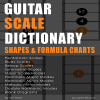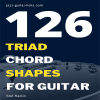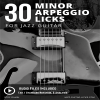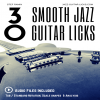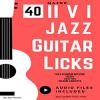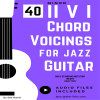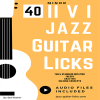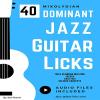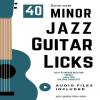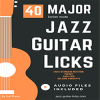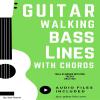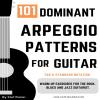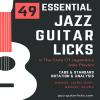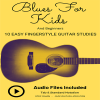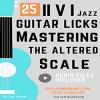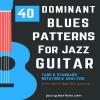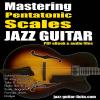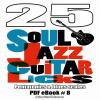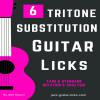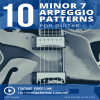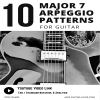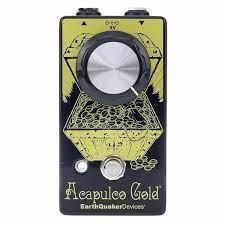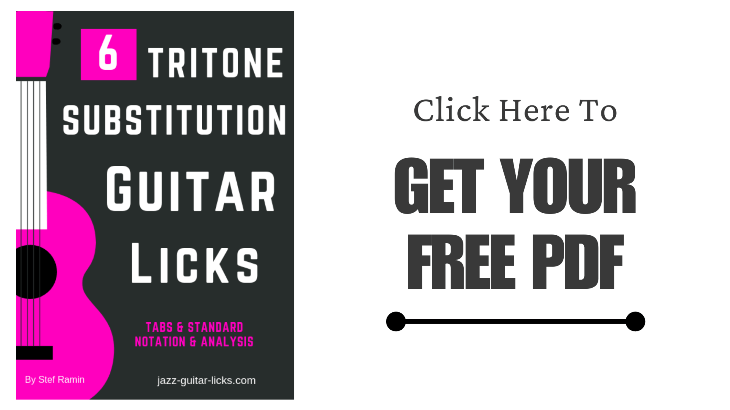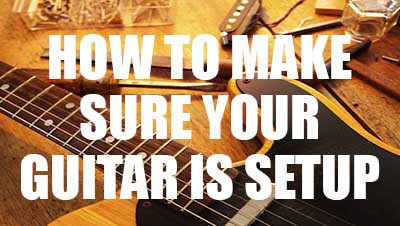
How to Make Sure Your Guitar Is Setup
- By jazz-guitar-licks
- On 2017-11-30
- In Guest Posts
- 0 comments
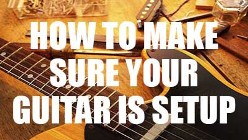 Taking care of your equipment is essential.
Taking care of your equipment is essential.
Guest post by Glen Parry
Whether it’s your car, PC, or your guitar, in order for it to work properly and as for long as possible, you need to make sure that everything’s in order. Sure, you could take your guitar to a professional and have them do it for you, but why not learn to do it yourself? Not only will you save money and time, but you will also learn a thing or two about your instrument. Here are some quick and straightforward tips that will make setting up your guitar a piece of cake!
1. Get The Right Tools
Remember those small Allen keys and/or screwdrivers that came with your guitar? Well, it’s time for you to look for them. If for some reason, you’ve managed to misplace them, it’s fine. There is a good chance you’ll already have most of the tools you’ll need. If not, a quick trip to the hardware store and you’ll be ready to go.
A word of caution: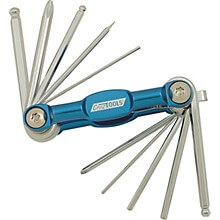
DO NOT use tools that are too small. This is the easiest way to damage your guitar.
Here’s a list of all the things you will need:
• Screwdrivers and Allen wrenches
• A soft cloth
• Tuner
• Ruler
Now that you’ve got everything ready, it’s time to start!
2. Checking Your Guitar Neck
While setting up the neck of your guitar may seem like an intimidating task, it’s actually fairly simple.
To start, take a close look at the neck. You can do this in a few different ways. I like to sight my guitar by holding it up and using the body of the guitar as a reference frame. Does it look straight? Is the back bowed in any way? Are the strings touching the frets in the middle? Or maybe they’re touching the frets everywhere but the middle?
If you can see that the neck isn’t straight, you need to adjust the truss rod. The truss rod is a long metal rod that goes through the whole length of your guitar’s neck. You can usually access the truss rod on the top of your neck, at the point where it meets the head with the tuning mechanism. However, there are few different designs out there. A quick look-up of your specific model may sometimes be required.
Note -
If you are looking to make micro adjustment, you’re going to need an action gauge. Follow this guide here. The access point at the top of the neck is usually covered by a piece of plastic, so move that out of the way. Now, take the matching Allen key, and insert it.
• If the neck bows away from the strings, you need to tighten the truss rod
• If it bows towards the strings, you need to loosen the truss rod
Every time you turn the Allen key, do it a step at a time. Don’t turn it in full circles, as you will overdo it. Continue to make gradual adjustments until your neck is brought back into alignment. If it doesn’t turn smoothly – stop! Never force a truss rod. This is usually a symptom of a larger problem. Don’t worry too much if the neck wasn’t straight. This tends to happen over time, due to the differences in temperature, humidity, and general use. Just make sure that you check if the neck is straight from time to time. Your guitar will thank you!
3. Getting Rid of Fret Buzz
If you had fret buzz before you adjusted the neck on your guitar, chances are that it’s still present. If that’s the case, you need to follow a couple of extra steps in order to get rid of it.
First of all, tune your guitar. It should be a tuning that you’re most commonly using, or just the standard E tuning if you’re just a beginner.
This is a good time to change your strings is you haven’t done so in a while. Just note that you will have to check if your neck is straight again, after you’ve put on the new strings. Once you’ve removed the old strings, use a soft cloth to clean the residue off the neck. Make sure you get all of it, especially next to the frets!
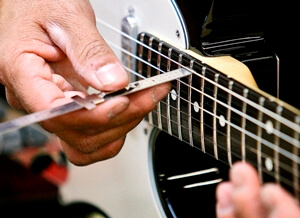 Okay, now you need to measure the gap between the 12th fret and all of the strings. You can use a ruler, or an action gauge. It should be around 1.5mm or 0.05 inches. If the strings are further from the fret than this, you need to lower the bridge, and if they’re closer to the fret, you need to raise the gap.
Okay, now you need to measure the gap between the 12th fret and all of the strings. You can use a ruler, or an action gauge. It should be around 1.5mm or 0.05 inches. If the strings are further from the fret than this, you need to lower the bridge, and if they’re closer to the fret, you need to raise the gap.
Adjusting the height of the bridge, or the action of the strings, is done by adjusting the screws on the bridge. Depending on the design of your guitar, it’s either done for the whole bridge using 2 screws, or for each string separately. Set the strings to the recommended height, and play each string on each fret. If the buzz is persistent, make minor adjustments to the height of the bridge until it’s gone.
4. Setting The Intonation!
The neck is straight, and there is no more buzz! Now, it’s time to set the correct intonation. Once again, tune your guitar as precise as possible. Pluck one string, and see if the tuning is on point. Now press the 12th fret and pluck it again. Is the tuner showing the same thing, or is it sharp or flat?
• If the note is sharp, you need to move the bridge saddle back towards the tailpiece.
• On the other hand, if it’s flat, move the bridge saddle towards the pickups
Similar to setting the action of the strings, different guitars have differently designed bridge saddles. You need to look for a screw that’s used for the lateral movement of the saddle and turn it accordingly. Repeat this for each string, and you’re good to go!
5. Double Check
Due to the vibrations you make when playing your guitar, screws, nuts, and bolts move. You need to make sure that everything is securely in place. This covers the screws that hold your strap, the tuning mechanism, and probably most importantly, the screws that keep the input in place.
Oh, and don’t forget to keep your guitar clean! Dust, dead skin cells, the oil, and grease from your fingers make your guitar sticky, dirty, and downright less responsive. A soft cloth and guitar specific cleaning products is the best way to go. DO NOT use common household cleaning products. These are usually far too harsh for the tonewood on your guitar.
Well, that pretty much covers the basics of setting up your guitar. I hope that you found this article informative and that you’ve learned something new about your favorite instrument. Thank you for reading; if you’ve found this useful we’d appreciate a share on social media!
About the author
Glen Parry has been playing guitar for over 15 years. He’s done everything the hard way so you don’t have to. You can find more advice and buying guides over at Audio Mastered.
-
Guitar Scale Dictionary
This E-book is a printable PDF method including over 700 scale diagrams and formula charts for guitarists. -
30 Groovy Jazz Guitar Licks
This downloadable package contains a PDF WITH audio files giving access to 30 groovy guitar phrases mixing jazz, blues and funky licks for beginners. -
Guitar Chord Dictionary
This PDF eBook provides over 550 guitar chord shapes. This is the perfect reference guide to understand how chords are built and how to play them on the guitar neck. -
172 Arpeggio Shapes For Guitar
This printable PDF is a method dedicated to guitarists of all styles who want to learn the most important types of arpeggios. -
126 Triad Chord Shapes
This handbook for guitar players is intended both for teachers and students. It includes 126 guitar shapes for mastering triads. -
30 Minor Arpeggio Licks
This package includes a printable PDF method containing 30 exercises with tabs, staves and audio files for practicing minor arpeggios on guitar. -
II V I Bundle - 170 Exercises
This bundle contains 4 PDF methods for a total of 170 exercises with tabs, staves, analysis & audio files for practicing scales, arpeggios licks & chords over the 2-5-1 progression. -
Diatonic Licks Bundle
This package contains 120 jazz guitar lines based on diatonic modes as Mixolydian, Dorian and Ionian. PDF format with tabs, audio files and analysis. -
30 Smooth Jazz Guitar Licks
In this package you'll get a printable PDF Method with tabs, notation, analysis, scale shapes and audio files for practicing 30 smooth jazz guitar licks. -
40 II V I Jazz Guitar Licks
This pdf method for guitar contains fourteen 2 5 1 jazz guitar lines with tab, standard notation, analysis, scale charts and audio files. -
50 II-V-I voicings
This printable PDF guitar method provides 50 exercises with audio files, analysis, tab and staves for learning major 2-5-1 chord voicings. -
40 Minor 2 5 1 Chord Voicings
This PDF method contains 40 exercices with tabs, scores and audio files for practicing jazz guitar chords over the minor 2 5 1 progression. -
40 Minor II V I Licks
This guitar method is a printable PDF with tabs, diagrams, theory and audio files providing 40 minor 2 5 1 jazz patterns. -
40 Mixolydian Jazz Guitar Lick
PDF guitar method with tabs, audio files and theory providing 40 dominant jazz guitar lines for teachers and students. -
40 Minor Jazz Guitar Licks
This printable guitar method in PDF format contains 40 easy minor jazz guitar lines based on the Dorian mode. -
40 Major Jazz Guitar Licks
Printable PDF eBook method containing 40 major jazz guitar licks with tab, standard notation and audio files for beginners and intermediates. -
Guitar Walking Bass Lines
This jazz guitar method about walking bass lines and chords is available as a PDF files containing 35 exercises with tabs, analysis and audio files -
101 Dominant Arpeggio Patterns
This printable PDF method provides 101 dominant arpeggio exercises with tab, theory and standard notation for the jazz, blues and rock guitarist. -
49 Essential Jazz Lines
This printable eBook method in PDF format provides 49 jazz solo transcriptions of the greatest jazz musicians. Tab, standard notation, audio files & analysis. -
11 Jazz Blues Studies
11 jazz blues chord studies with tabs, standard notation, analysis, and audio recordings and PDF. -
10 Easy Fingerstyle Blues
This PDF with Tabs and audio files provides 10 easy acoustic fingerstyle blues guitar studies for kids and beginners. -
25 Altered Jazz Guitar Lines
This PDF eBook method contains 25 altered jazz guitar licks with tabs, patterns, scale charts and audio files to master, apply and develop the altered scale. -
40 Blues Dominant Patterns
This printable method is available as a PDF file containing 40 easy dominant jazz-blues guitar lines with tabs, standard notation, analysis, audio files and scale charts. -
Mastering Pentatonic Scales
This jazz guitar method is an eBook available as a PDF with standard notation, guitar tabs, diagrams, analysis, audio files and backing tracks. You will find in this booklet 25 easy jazz guitar lines with theory using common and rare pentatonic scales. -
25 Soul Jazz Guitar Licks
You will find here an eBook available in PDF containing 25 soul jazz and hard bop guitar licks in the style of Grant Green, Melvin Sparks, George Benson. These jazz lines come with tabs, standard notation, guitar neck diagrams, backing track for practice and 25 audio files for each riff. -
25 Diminished Patterns
This eBook PDF with audio files contains 25 dominant diminished jazz guitar patterns using the half-whole diminished scale and diminished 7th arpeggios. -
6 Tritone substitution licks
This Printable PDF eBook available for free download contains 6 easy jazz guitar licks with tabs/notation, youtube video link and analysis about the tritone substitution. -
10 Minor 7 Arpeggio Patterns
This printable PDF eBook offers 10 easy minor 7 arpeggio patterns with its related YouTube video for beginner guitarists. -
10 Easy Major 7 Arpeggio Licks
This is a printable PDF for beginner jazz guitar players providing 10 easy licks to practice major 7 arpeggios. -
10 Chord Melody Lines
Within this package, you'll discover a set of ten chord melody exercises for beginners. Printable PDFaudio files, a backing track, and a link to the associated YouTube video. -
10 Minor Blues Scale Licks
You'll find here a PDF with 10 easy jazz guitar licks to practice the minor blues scale on guitar.
Add a comment
